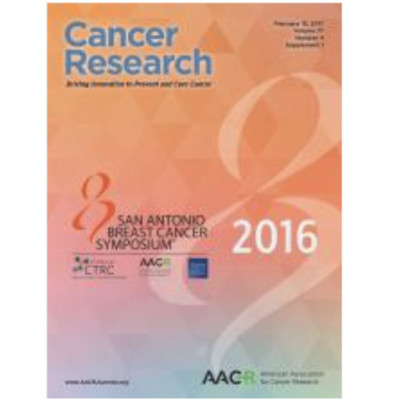Publication
Assessing response in locally advanced breast cancer treated with neaodjuvant chemotherapy: Predictive and prognostic potential of volume-based metabolic variables with 18F-FDG PET/CT
M.D.M. Munoz-Sanchez, A. Soriano, A.M. Garcia-Vicente, M.J. Molina-Garrido, J. Perez-Beteta, A. Olaverri-Herandez, D. Molina-Garcia, J.A.S. Crespo, V.M. Perez-Garcia, E. Val-Pérez, F. Martín-Ordóñez, J.I. Chacón-Muñiz, R. Álvarez-Cabellos, R. Espinosa-Aunión, C. Ortega-Ruipérez, M.J. Cantero, A. Castro, E. Vaquero, E. Catalá, F. Torrecillas and A. Soriano-Castrejón
Cancer Research 77, P4-01-04 (2017)
MOLAB authors
Abstract
Aim: To explore the usefulness of metabolic variables of breast tumours obtained in 18F-FDG PET/CT in the prediction of response to neoadjuvant chemotherapy (NC) and prognosis in locally advanced breast cancer (LABC).
Material and methods: Prospective multicenter study including 60 patients with LABC and NC indication and a baseline 18F-FDG PET/CT.
After breast tumor segmentation, SUV variables (SUVmax, SUVmean and SUVpeak) and volume-based variables as metabolic tumor volume (MTV) and total lesion glycolysis (TLG) were obtained.
Univariate analysis was performed with the use of Kaplan-Meier and Cox proportional hazards models to study the potential of metabolic variables, molecular phenotypes of breast cancer specimens and histologic response to predict: disease-free status (DFs), disease-free survival (DFS) and overall survival (OS).
Results: Sixty patients underwent NC. 14 were classified as pCR. 56 patients where free of recurrence during the follow-up. Median ± SD of DFS and OS was 43±15 and 46±13 months respectively.
SUV and volume-based variables showed significant relations (p<0.005) with the histological response with higher values in responders compared to no responders (median, mean and SD of SUVmax, SUVmean, SUVpeak, MTV and TLG of 13.77,13.34 and 5.79; 8.85, 8.35 and 3.73; 11.33, 10.7 and 4.88; 13.44, 26.60 and 34.58 and 96.39, 258.12 and 384.63 for responders vs 6.04, 7.84 and 5.26; 3.42, 4.77 and 3.20; 4.79, 6.06 and 4.08; 9.88, 13.63 and 12.48 and 33.78, 70.17 and 97.94 for non responders respectively).
MTV and TLG showed significant association with DFs (p=0.015 and p=0.038 respectively). Median, mean and SD of MTV and TLG for patients with DFs were: 8.90, 13.72 and 15.12 and 33.78. 90.54 and 144.64 respectively. Median, mean and SD of MTV and TLG for patients with a non-DFs were: 16.72, 29.70 and 31.09 and 90.89, 210.98 and 382.80 respectively. No significant relations were observed with SUV variables and DFs.
No significant relations were obtained for none metabolic variable with DFS and OS.
Conclusion: In patients with locally advanced breast cancer, volume-based metabolic variables obtained with 18F-FDG PET/CT, differently to SUV based variables, were good predictors of neoadjuvant chemotherapy response and disease free status.















